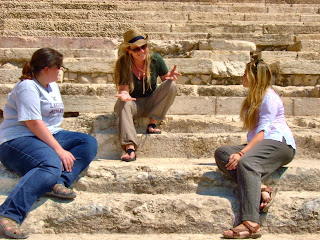Dictionary of Jesus and the Gospels:Essay Review Part I
Brant J. Pitre
One of the most difficult topics in New Testament studies today is apocalypse and its corresponding adjective, apocalyptic. As scholars well know, this term is used often imprecisely, frustrating attempts at clarity and nuance. Adding to this problem is the attempt to discover Jesus and the Gospels relationship to these rather nebulous terms.
In the first edition of the Dictionary of Jesus and the Gospels (henceforth, DJG), the entries for "Apocalyptic" and "Apocalyptic Teaching" were divided into two, authored, in the case of the former, by Dale Allison, and in the latter, T.J. Geddert (17-27). In the second edition of DJG, the entries are now combined and are deemed, "Apocalypticism and Apocalyptic Teaching" (23-33). I was delighted to see that Brant Pitre, Professor of Sacred Scripture, Notre Dame Seminary, New Orleans, was given this difficult assignment. Brant is one of the brightest, young, historical Jesus scholars going today, as he is aptly demonstrated in his publication of his revised dissertation, Jesus, the Tribulation, and the End of Exile: Restoration Eschatology and the Origin of the Atonement (Mohr Siebeck; Baker Academic; 2005).
Pitre begins the entry by noting that "apocalypse" is used in three different ways: 1) As a genre of literature in existence at the time of Jesus; 2) The terms apocalyptic and apocalypticism reflect a social and religious worldview shared by many of Jesus contemporaries and is often reflected in written apocalypse; 3) "apocalyptic eschatology" refers to features of apocalypse and the apocalyptic worldview that focus on the cataclysmic end of the cosmos (23-24). Building off of these nuances, Pitre divides the essay into six parts: 1) Jesus and Apocalyptic Genre; 2) Jesus and the Apocalyptic Worldview; 3) Jesus and Apocalyptic Eschatology; 4) Jesus, the Oliver Discourse and Apocalyptic Language; 5) Apocalyptic Teaching in the Four Gospels; 6) The Apocalyptic Death and Resurrection of Jesus. What follows will be a brief examination of each of these sections.
The first section, Jesus and Apocalyptic Genre (24-25), begins by noting that John J. Collins still provides the most useful definition of the literary genre of apocalyptic, namely "a genre of revelatory literature with a narrative framework, in which a revelation is mediated by an otherworldly being to a human recipient, disclosing a transcendent reality which is both temporal, insofar as it envisages eschatological salvation, and spatial, insofar as it involves another, supernatural world" (The Apocalyptic Imagination; 4-5; here 24). Second, Pitre notes that the most important texts for studying Jesus' and the Gospels apocalyptic backgrounds are 1 Enoch, 4 Ezra, 2 Baruch, Testament of Moses, and the Apocalypse of Abraham. Further, the book of Daniel is most important for Jesus for four reasons: 1) The Son of Man, 2) the Kingdom of God-"when Jesus speaks of the coming of the kingdom, he is speaking of the Danielic kingdom of God", (25), 3) the suffering Son of Man (Dan 7:13-14, 24-25), 4) "the abomination of desolation" (Mt 24:15; Mk 3:14; Lk 21:20; cf. Dan 9:24-25).
In the second section, Jesus and the Apocalyptic Worldview (25-27), Pitre notes that an apocalyptic worldview is marked by a prominent interest in otherworldly revelation, and in the case of Jesus, his revelations and visions as portrayed in the Gospels are relatively veiled when compared go other Jewish apocalyptic literature (26). Other prominent features of an apocalyptic worldview are the belief in angels and demons, otherworldly realms (e.g. 'heaven', 'hell', 'Gehenna'), and its interest in the end of the present world and the beginning of the world to come (27).
The third major section, Jesus and Apocalyptic Eschatology, masterfully surveys the three major interpretive schools, namely, an apocalyptic Jesus, a nonapocalyptic Jesus, and an eschatological Jesus. The fourth section, Jesus, the Olivet Discourse and Apocalyptic Language (Mt 24-25; Mk 13; Lk 21), argues that much of the Olivet Discourse originated with Jesus himself (29), and that "...one could argue that Jesus saw his death as the Danielic messiah as inaugurating the eschatological tribulation and destruction of the temple" (30). Much recent scholarship of the Olivet Discourse tends to focus the imagery of the Sun and moon being darkened and the stars falling at the coming of the "Son of Man" (Mt 24:29-35; Mk 13:24-27; cf. Lk 21:26).
Finally, Pitre surveys apocalyptic teaching in the four Gospels (30-32), and in a seperate and final section, discusses the Apocalyptic Death and Resurrection of Jesus (32). In the latter, Pitre notes that the unique and controversial Matthean account of the resurrection of the "holy ones" triggered by the death of Jesus (Mt 27:51-53), model the two-fold movement of Jewish apocalyptic eschatology: 1) the sufferings of the righteous in the eschatological tribulation (the so-called messianic woes) are followed by 2) the glorification of the elect in the eschatological resurrection (32).
In sum, Pitre' s entry in DJG II is masterful, in keeping with the high standards of this series, and should be the first port of call for studying Jesus and his relationship to Jewish apocalyptic literature.

Comments